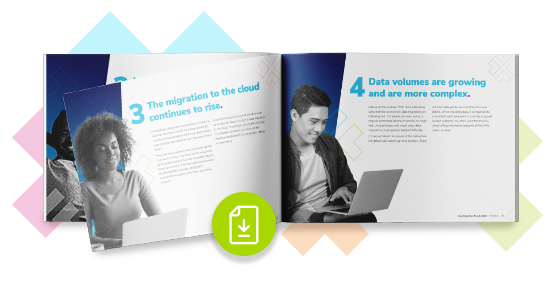6 Data Migration Trends for 2021
In an increasingly competitive landscape, businesses need to stay ahead by ensuring the highest level of customer experience. This has meant projects such as bringing in new, improved systems, which all involve data migrations.
2020 was a year we won’t forget in a hurry. People’s lives suddenly became unrecognisable and companies were not immune from these changes. In many ways, businesses were hit hard by lockdowns, with most staff suddenly having to work from home. It was an abrupt change felt by many.
As a result of the pandemic many businesses had to evaluate their systems and operations, to allow for new working conditions and changing consumer behaviour. These changes haven’t been left in 2020. In an increasingly competitive landscape, businesses need to ensure they are staying ahead by ensuring the highest level of customer experience. This has meant projects such as bringing in new, improved systems, which all involve data migrations.
Data migration is the process of moving data from one location to another, one format to another, or one application to another. Each data migration is different, with varying amounts of systems and data to be consolidated and moved. In this article we will explore the data migration trends for 2021.
1) Digital transformation is on the rise
Digital transformation is on the rise with companies who make it their priority seeing up to 5.7 times more revenue. It is certainly something companies cannot afford to avoid.
One key aim of most digital transformation projects is to move away from the use of disparate systems. Gaining insights across the business requires the abolition of data silos, which is often achieved through the consolidation of multiple target systems.
In order to consolidate multiple systems, you have to migrate the data over. With digital transformations becoming a must, so too are the data migrations that underpin them.
2) Move away from legacy systems
With vendors, such as SAP, removing support for older versions of their software and encouraging customers to move to newer versions, legacy migrations are becoming increasingly common.
Such migrations, while daunting, can improve the performance and competitiveness of your organisation. Legacy systems often suffer from poor performance, with high maintenance costs. The lack of vendor support and regular updates for old systems can compromise your data security, meaning data migrations from legacy systems are imperative to ensure a functioning IT system.
Often with legacy systems comes masses of data quality problems. With data quality often having been left behind, suddenly it is imperative to ensure that the data is clean and then formatted correctly for the new target system.
While it can be a lengthy and daunting process, it is one that brings with it huge benefits to the business. It allows your company to perform to its highest standard at better value, as well as to better manage and protect sensitive data.

